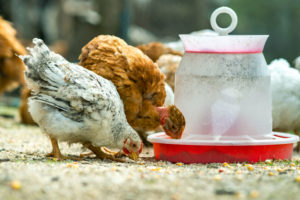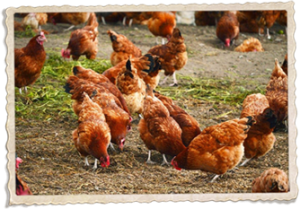While often confused for one another, chicken grit and oyster shells are two different things. And both are crucial to your flock’s health. Grit and oyster shells provide essential nutrients that will ensure the health of your chickens and their eggs. Here we discuss everything you need to know about chicken grit and oyster shells.
Chicken Grit
What is Chicken Grit?
Chicken grit is made from tiny pieces of stone and gravel. Commercially produced grit is often made from insoluble stone, or stones that cannot be dissolved in water. This includes granite or flint. There are various grades of grit that should be selected based on your chickens’ age. For example, baby chicks should only consume very fine grit, while older chickens can handle coarser grit.
Why Do You Give Your Chickens Grit?
Feeding your chickens small bits of stone and gravel seems counterintuitive. After all, we would never eat stone. But in fact, grit plays an essential part in their digestive system. When living in the wild, chickens often take in bits of stone as they forage for food. These bits of stone and gravel then travel down into the gizzard, helping the gizzard grind food into a more manageable size. Put another way, grit acts like teeth, working food down so that the chicken can swallow and digest the food.
When chickens don’t live in the wild, though, they don’t forage. Even if they are free ranging, the chickens will still rely on feeders and thus will not forage as much as their wild counterparts. As a result, they will not be taking in those small bits of stone and gravel that help them digest their food. That’s why adding grit to their diet is so important. And don’t worry—the grit will eventually wear down enough so that it passes through the chicken without causing any harm.
How to Feed Grit to Chickens
Chicken grit can be easily purchased online or at a local feed store. Buy grit that is suited to the age of your chickens (finer grit for younger chicks, and coarser grit for older chickens). Provide the grit separate from your feed, typically in a container inside the coop. That way chickens can take however much they need. If you’re not sure how much grit to provide, just keep in mind that too much grit is better than not enough.
Oyster Shells
What are Oyster Shells?
Oyster shells are exactly as they sound—they are crushed up oyster shells for your chickens to eat. They are considered a soluble grit, but remember, they are not the same thing as chicken grit. Chicken grit, which we discussed above, is always insoluble; oyster shells are soluble.
Why Do You Give Your Chickens Oyster Shells?
Due to their soluble nature, oyster shells are not used to help with digestion. Instead, they are exclusively used to help add calcium to your chickens’ diet. Chickens need calcium in order to produce plenty of strong eggs. However, layer feed does not always contain enough calcium for your chickens. As a result, you can add oyster shells to your flocks’ diet to help them produce eggs.
However, not all chickens need oyster shells. Roosters or older chickens that do not produce eggs will not need the extra calcium. Additionally, if your chickens are producing eggs just fine with layer feed, then there’s not reason to give them oyster shells. But if your chickens are struggling to consistently produce eggs, or their eggs have soft shells, then oyster shells can help.
How to Feed Oyster Shells to Chickens
Oyster shells should never be mixed in with feed. This is because different chickens require different amounts of calcium. For example, younger chickens may need less than older chickens. As such, you should provide oyster shells similar to how you provide chicken grit—in a separate container in the coop where your chickens can take as much or as little as they want.
For more tips on how to care for your backyard chickens, read through our blog or contact Chickens for Backyards today!

